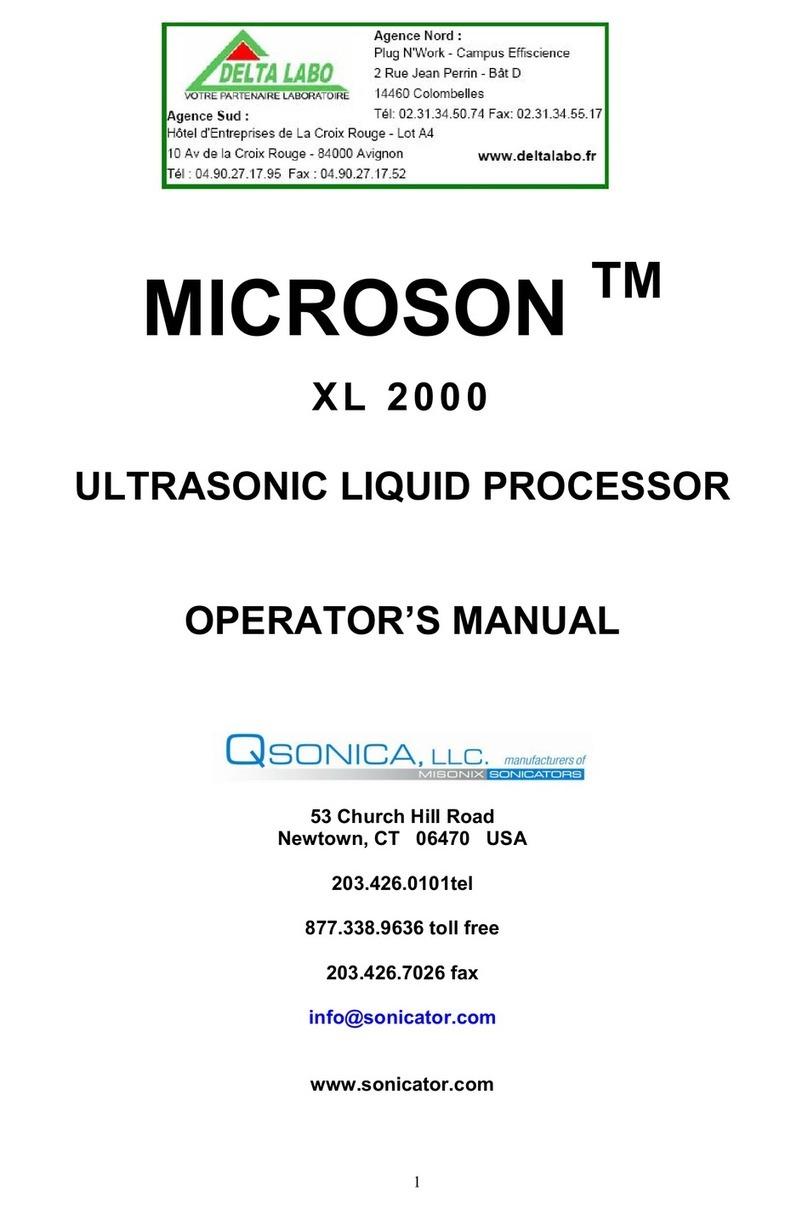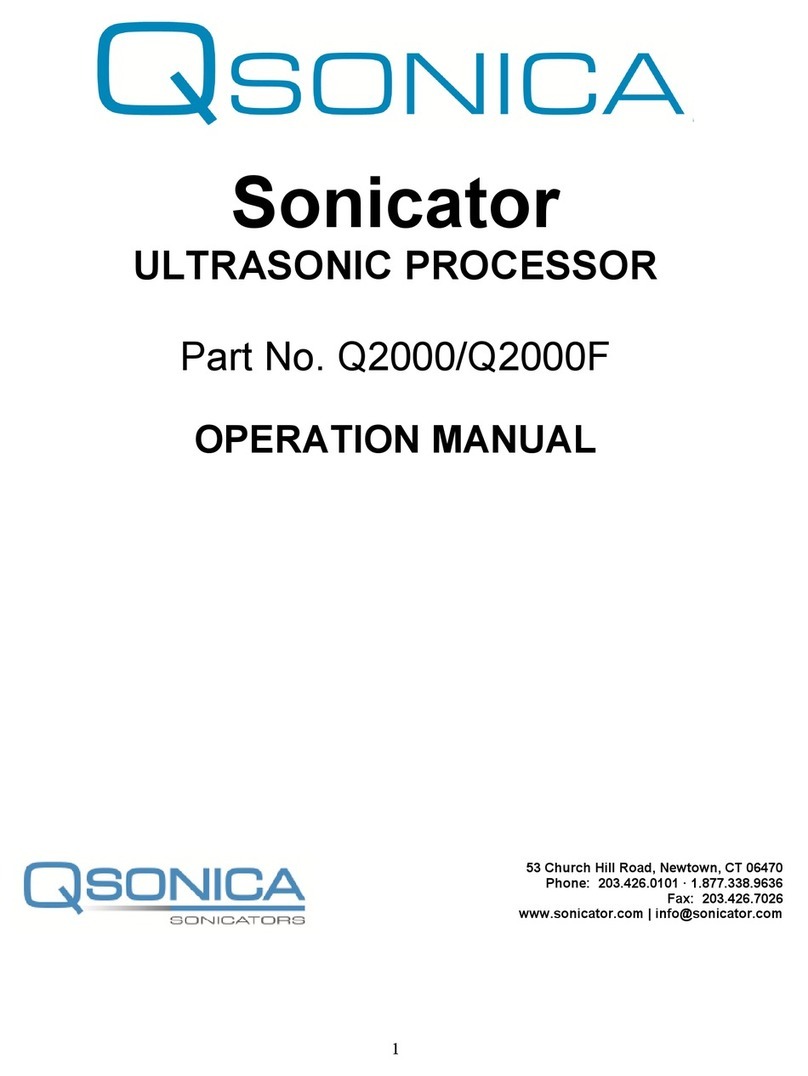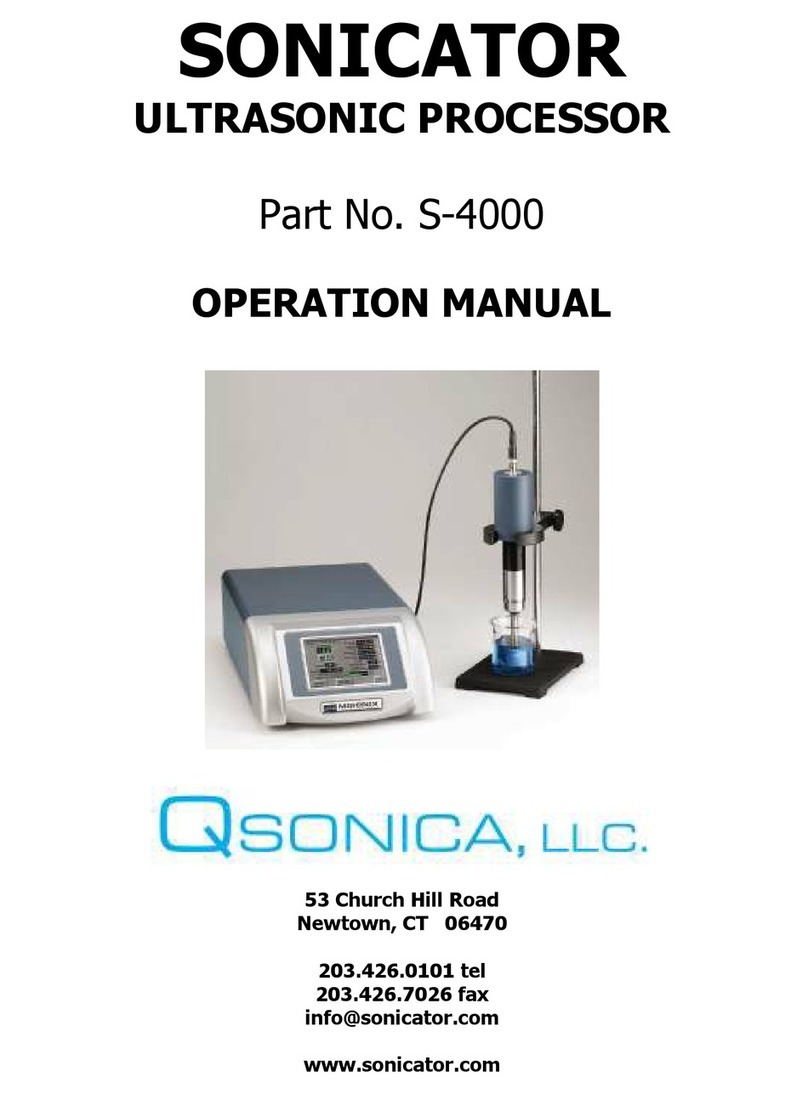
Rev. 6-12
4. Principles of Operation
The ultrasonic electronic generator transforms AC line power to a 20 KHz signal that drives a
piezoelectric converter/transducer. This electrical signal is converted by the transducer to a
mechanical vibration due to the characteristics of the internal piezoelectric crystals.
The vibration is amplified and transmitted down the length of the horn/probe where the tip
longitudinally expands and contracts. The distance the tip travels is dependent on the amplitude
selected by the user through the touch screen pad. As you increase the amplitude setting the
sonication intensity will increase within your sample.
In liquid, the rapid vibration of the tip causes cavitation, the formation and violent collapse of
microscopic bubbles. The collapse of thousands of cavitation bubbles releases tremendous energy
in the cavitation field. The erosion and shock effect of the collapse of the cavitation bubble is the
primary mechanism of fluid processing.
The probe tip diameter dictates the amount of sample that can be effectively processed. Smaller tip
diameters (Microtip probes) deliver high intensity sonication but the energy is focused within a
small, concentrated area. Larger tip diameters can process larger volumes, but offer lower intensity.
The choices of a generator and horns/probes are matched to the volume, viscosity and other
parameters of the particular application. Horns are available for both direct and indirect sonication.
The Accessories section has more information on this subject.
Please consult with a product specialist for assistance with selecting a probe for your application.
Relationship of Amplitude and Wattage
Sonication power is measured in watts. Amplitude is a measurement of the excursion of the tip of
the probe (probe is also known as a horn).
Some ultrasonic processors have a wattage display. During operation, the wattage displayed is the
energy required to drive the radiating face of a probe, at that specific amplitude setting against a
specific load, at that particular moment. For example, the unit experiences a higher load when
processing viscous samples then when compared to aqueous samples.
The speed /cruise control on an automobile, can, to a certain extent, be compared to an Ultrasonic
Processor. The speed/cruise control is designed to ensure that the vehicle maintains a constant rate
of travel. As the terrain elevations change, so do the power requirements. The cruise control
senses these requirements, and automatically adjusts the amount of power delivered by the engine
in order to compensate for these ever changing conditions. The greater the terrain rate of incline
and greater the resistance to the movement of the vehicle, the greater the amount of power that
will be delivered by the engine to overcome that resistance and maintain a constant speed.
The ultrasonic processor was designed to deliver constant amplitude, to your liquid sample,
regardless of these changes in load (much like the vehicle’s cruise control described above). As a
liquid is processed, the load on the probe will vary due to changes in the liquid sample (i.e.
viscosity, concentration, temperature, etc.). As the resistance to the movement of the probe
increases (increased load on the probe), additional power will be delivered by the power supply to
ensure that the excursion at the probe tip remains constant. The displayed wattage readings will
vary as the load changes, however the amplitude will remain the same.
The resistance to the movement of the probe determines how much power will be delivered to































